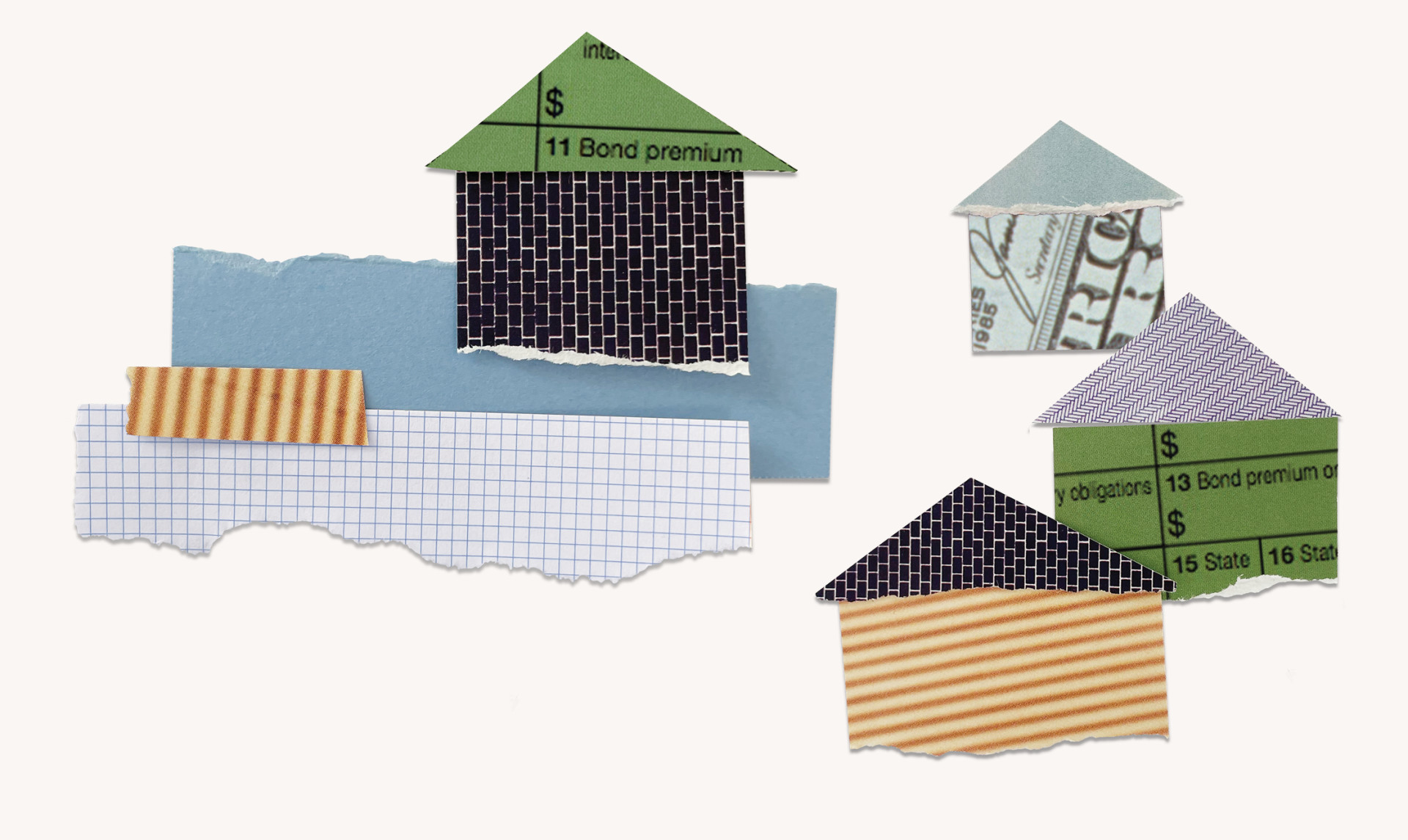When Alejandro Ayestarán was thinking of investing remotely in real estate, he was thinking really remote.
Like about 6,500 miles remote.
Ayestarán lives in San Francisco and he is from Argentina, so he was contemplating buying rental property there and having family members be the property manager.
Then he joined Mynd as the chief business officer two years ago, and he started looking closer to home. But not too close: Think Texas and North Carolina.
The Bay Area, where he has a home with his wife and two children, “is not necessarily a great investor market going forward” but Mynd, an Oakland-based property investment and management startup, operates in more than 25 markets around the country.
Ayestarán quickly learned that his new company offered him an opportunity to diversify into single family homes, an asset class that he “did not need to be convinced about.”
- Learning about the price point — $200,000-350,000— to buy “Class A” rental properties around the country was an “aha moment.”
- Financing a purchase creates move leverage for investors. Most property purchases in Latin America are made with cash.
- “Investing in bricks,” as the saying goes in Latin America, is a great way to build wealth over time. “The economics are compelling,” said Ayestarán.
Advantages of owning out of state rental property
Mynd CEO Doug Brien, who owns rental properties in various parts of the country — including near where he lives in the Bay Area — often laments how provincial many investors are when it comes to buying property in the age of remote real estate investing.
Believing that you need to live within driving distance of a rental property, he says, can be counterproductive.
In the post-pandemic rental property market — where single family homes are sold through 3D floor plans and online real estate video walkthroughs — more and more Americans are getting comfortable with investing in real estate out of state. Redfin reported that some 63 percent of offers on homes in 2020 were made by buyers who had yet to visit the property.
Will remote real estate investing become as straightforward as a stock purchase? The era of online investing, using digital tools and local expertise, has arrived.
Thomas Stepp, head of investor offerings at Mynd, says it's all about maximizing the return on investment.
“Why invest locally if the data points to other places and you now have the ability to invest in the best markets?” Stepp said. “You want to invest in the market where things are going, not where things have been.”
Most of the gains in the housing market have come in the Sunbelt, as industries in the Northeast and the Rust Belt have faded and tax policies in those regions have become more onerous.
He recommends looking at three market drivers when deciding where to invest in rental property:
Population growth
Job growth
Cost structures (home prices, property taxes, insurance, etc.)
With quality data and an understanding of the risks of remote real estate investing, the decision on where to buy becomes clearer.
“If your money can work harder for you elsewhere, why not?” Stepp asked.
Where to look for out of state rental property?
Ayestarán said he and his wife needed to diversify some of their assets outside of technology. “We both work in tech, we are invested in tech — we are tripled down in tech.”
Through Mynd, whose advisors coached him through the process of buying real estate out of state, he purchased properties in North Carolina and Texas. He is betting on the upside of those two markets, while diversifying both his investment portfolio and his geographic footprint.
“Diversification is an advantage of owning real estate,” he says, since the market does not correlate directly with stocks. He prefers to keep about 30-40 percent of his portfolio in long-term indexes, and split the rest between real estate, startups and other nascent opportunities.
And real estate provides some stability during a period of market volatility, like the first half of 2022, while acting as a hedge against inflation.
Owning property outright, as opposed to a REIT or other investment vehicle, offers better tax advantages. Ayestarán said direct ownership also enables the greatest flexibility: a home can be converted to a short-term rental; the property can be gifted; or it can be modified to cater to changing rental demand patterns.
“And if you need to, you can exit and get that liquidity,” he added.
How to overcome the remote investing hurdle
About 40 percent of the more than 5,000 owners on Mynd's technology platform are remote investors. Most of those investing in real estate remotely live in more expensive coastal cities.
For some, buying rental property out of state was a steep hill to climb.
“I was the last person in America to buy real estate I have not seen,” said David Greenberger, founder and CEO of Plenti Financial. “I am an attorney and a New Yorker and I don't trust anybody.”
Greenberger, who lives in San Diego, was first persuaded to buy rental property out of state, sight unseen, about a decade ago by a client based in California who wanted him to invest in property in Memphis. Greenberger was headed from California to check on the property when his flight was canceled.
Then it dawned on him: “Who has to schlep?”
He was also growing tired of the gyrations in the stock market and saw how others were doing well owning rental property. He spoke to other investors in the Memphis deal and decided to go ahead.
Since his initial foray, Greenberger has branched out, most recently executing a 1031 Exchange after selling a property in to purchase rental property in North Carolina and Texas through Mynd.
A 1031 Exchange, also known as a “like-kind exchange,” is named after a section of the U.S. Internal Revenue Code. It allows an investor to avoid paying capital gains taxes on the sale of an investment property, as long the proceeds are reinvested within certain time limits.
“You can sell one home in San Diego and get six in Memphis,” Greenberger said.
He prefers less-regulated states with lower property taxes and insurance premiums, and looks at markets where there is a strong tenant pool. Memphis, for instance, is home to FedEx and has the busiest cargo airport in the world.
And he pays attention to where clients of his 1031 Exchange business are buying and selling.
“Follow the exchange traffic and you get an idea of what people on the ground are thinking,” he added.
Geographical diversity can mitigate risk
Stepp said he and his team offer real estate investors a broad perspective.
“We go through the same thought processes as an investment advisor,” he said, “including risk tolerance, investment goals, and the highest returns.” Mynd also has expertise in local laws, how to find quality tenants, how to maximize cash flow, and how to conduct due diligence. And Mynd is a property management company, an essential for the buyer of remote real estate.
Looking across the country — at the many markets where Mynd can facilitate the search, financing, purchase, insurance and ultimately the sale of a property — patterns start to emerge.
“The banking industry in Charlotte will do better over time,” he said. “Raleigh looks a lot like Austin, which looked a lot like Boulder, Colorado.”
Buying in different regions reduced risk as well.
“Each market does something different,” Stepp said. “Las Vegas and Phoenix benefit from Californians moving there, much like Florida benefits from New York money.”
Job growth in real estate markets can correlate to investment sectors, according to Stepp, so a remote buyer can diversify a rental property portfolio as if it were a stock portfolio:
Technology: Austin and Raleigh have strong and growing tech sectors.
Financial industry: Charlotte is the country's second-largest financial center; Bank of America and Wells Fargo are among the city's top employers.
Public sector spending: Jacksonville and San Antonio have large military bases, which create a stable and steady demand.
Health care: Nashville is a longtime magnet for healthcare companies (and aspiring country music stars).
Logistics: Memphis is centrally located and, as home to Fedex, has the busiest cargo airport in the world.
Employment growth: Houston, Atlanta and Phoenix have friendly corporate environments and affordable home prices.
Tourism and entertainment: Las Vegas and Orlando draw visitors from around the country, and the world.
Low price, steady returns: Indianapolis has pharmaceuticals and life sciences companies, and housing prices are favorable. The median listing price in April 2022 was $229,000.
The final tally on investing in rental properties out of state
With the technology platform Mynd offers, the idea of investors limiting their local real estate market is anachronistic.
As Doug Brien likes to say, “You don't need to go to Atlanta to buy Coca Cola stock.”
Stepp said that once investors see all the benefits of SFR real estate — the passive income, the tax breaks, higher rents, increases in equity — “then they are hooked.”
The problem is that many are unaware of how to take advantage of the opportunity in this part of the real estate market.
“How many people want to invest in property out of state but don't know how to do it?” Stepp asked. “Those people need to talk to us.”



